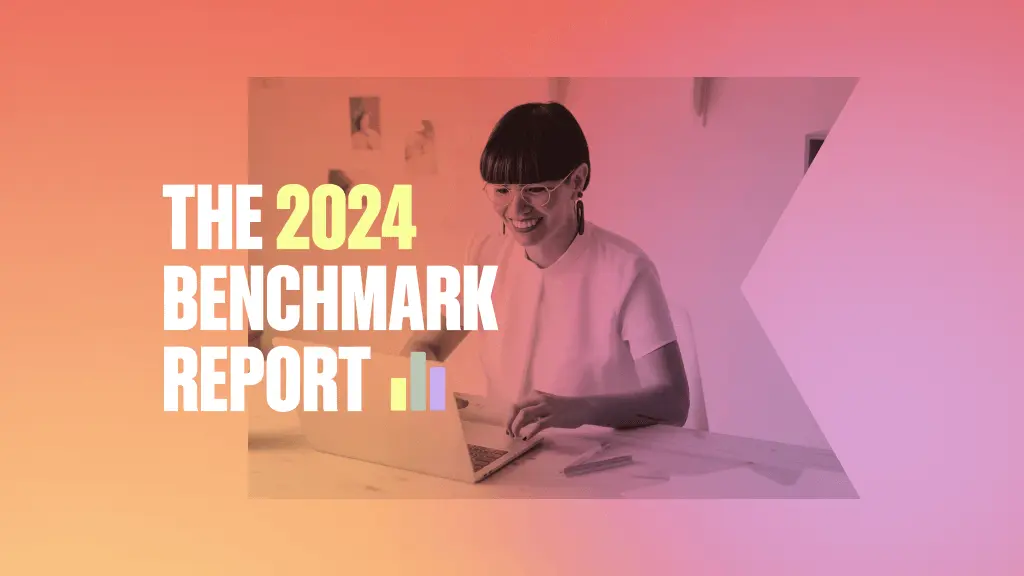4 creative list growth use cases that leverage A/B testing to build an audience, fast

The fastest-growing brands on Klaviyo have at least two on-site forms live—and they’re actively increasing form conversion rate.
Whether they’re targeted pop-ups, embedded forms, or fly-outs, on-site forms are designed to capture information from new website visitors. And to increase form conversions, fast-growing brands are A/B testing form placement, offers and discounts, copywriting, and timing—just for starters.
But what does this look like in practice? Here are 4 use cases from Klaviyo customers like you that have A/B tested their way to a bigger addressable audience—and more revenue—across email and SMS.
1. Creekside Nursery uses YouTube to increase pop-up conversion
Creekside Nursery is an 8.5-acre nursery in Dallas, North Carolina. In 2019, they started a YouTube channel that has grown to nearly 100K followers.
While they were happy about the success, the team struggled to monetize their audience. The vast majority of YouTube subscribers didn’t live in their small town.
This is when they turned to ecommerce as a way to grow their business—which also meant they needed a list to grow their owned audience, so they weren’t relying so much on YouTube to drive sales directly.
To start gathering email addresses and phone numbers, Creekside Nursery experimented with a two-pronged targeting strategy:
Founder Jenny Simpson started encouraging viewers to visit the Creekside Nursery website—which boosted pop-up visibility significantly to kickstart their list.
One is for desktop, one is for mobile, and an SMS-only form targets existing email subscribers. Device-specific flexibility gives the brand the opportunity to experiment with fields—for example, collecting more information on desktop while running fewer fields on mobile, where the expectation is a faster process.
In their first week of list building, Creekside Nursery garnered 2K+ sign-ups and $5.9K in revenue from email and SMS.
How you can integrate Creekside Nursery’s approach
If you’ve spent a lot of time and resources building a significant social media following, get the most out of it by converting as much of it as possible to an owned audience.
To do this, we recommend experimenting with UTM parameter targeting for your sign-up forms. When you target your forms by UTM, you�’re showing a specific pop-up to people who come from a certain source, like YouTube. This is how you can best carry over messaging on social media to your website, so you can improve the likelihood that a follower will become part of your owned audience.
To target by UTM parameter in Klaviyo:
- When setting up a sign-up form, navigate to the “Targeting & behaviors” tab.
- Under “Targeting,” select your criteria (i.e., “Don’t show to existing Klaviyo profiles”).
- Under “UTM Parameters,” select “Source” and specify a value (i.e., YouTube). You can also select “Medium” and broaden your criteria to all social channels.
2. Bearpaw drives 2.7x median submit rates with an exit pop-up discount
Best known for boots, Bearpaw sees peak sales in winter. That just means the brand can focus on activities other than selling during their off-season, including list building.
As part of their core email strategy, Bearpaw launched two types of sign-up forms on their website: a welcome pop-up and an exit pop-up. The brand’s hypothesis was that it would take more for someone to convert on an exit pop-up, so they offered a bigger incentive to subscribe from there than the welcome pop-up.
They were right. The submit rate on the exit pop-up was 2.7x the median for Bearpaw’s 100 closest peers, according to Klaviyo benchmarks—and it helped them grow their subscriber list.
How you can replicate Bearpaw’s experiment
If you’ve tried modest welcome pop-up offers and want to experiment with a more aggressive offer when someone’s about to leave your website, we recommend an exit pop-up form that includes a limited-time offer with a clear deadline.
Discounts are helpful for conversions, but they’re also not the be-all-end-all. Depending on your business economics, you may only want to run an aggressive discount for a week or two, when you’re really pushing to build your list.
This is where scheduled forms can come in handy. You can set them up to expire after a certain amount of time. That way, you won’t forget to turn them off—and end up handing out more discounts than you’d like.
To time-limit forms in Klaviyo:
- When setting up your sign-up form, navigate to the “Timing” section of the “Display” menu.
- Select the rule “When visitor is exiting the page.”
- After the form is set up, hover over the form you’d like to schedule.
- Click “Schedule” and enter your dates and times for the lifespan of the form.
3. Caden Lane personalizes pop-ups to tailor the experience from day one
Caden Lane started with one product: diaper bags. As they expanded their offerings and grew as a business, they wanted to increase their email volume—and to see results, they knew they would have to lean heavily on personalization.
While conventional wisdom leans toward minimizing the number of sign-up form fields, this isn’t what Caden Lane found worked best when they tested their approach. Their audience prefers more relevant emails to a lower-friction email sign-up process.
After testing 30 versions of their pop-up, Caden Lane found that their conversion rate was highest when they asked for more context—namely, details on who customers were shopping for. Now, people subscribe expecting personalization, and they get it from day one.
How you can replicate Caden Lane’s experiment
If you want to start running high-volume sign-up form tests, here are a few ways to start:
- Fields: Write several options for adding one personalization field to test.
- Timing and frequency: Consider using AI to auto-test multiple versions of your form and find the highest-converting display time.
- Dynamic coupon code: Experiment with including a code that’s personal to every unique user, so no two people receive the same code.
- Visitor: Target only those who fit a certain criteria, such as targeting email subscribers with SMS-only sign-up forms.
- Cart contents: Trigger a sign-up form based on total cart value, total number of items in cart, or specific product criteria.
4. Leonisa targets pop-ups to browsing device for SMS sign-ups
Intimate apparel brand Leonisa started in Colombia and now operates 18 countries across North and South America and Europe. After building their email list, they were ready to grow their SMS list in the US.
Because frequent mobile shoppers may be extra interested in SMS marketing, the Leonisa team tested displaying SMS sign-up prompts to mobile shoppers. When the brand targeted by device during a mobile-specific shopping experience, they drove 1.6x the median form fill rate for their peer group, according to Klaviyo benchmarks.
How you can replicate Leonisa’s experiment
If you’re ready to grow your SMS list, you’ll need to set up a sign-up form that collects a phone number and SMS consent. You may also want to target your email subscribers specifically, as they may be more willing to provide their phone number than people less familiar with your brand. Consider adding a discount code to sweeten the deal.
To set this up in Klaviyo:
- Create a basic sign-up form, either from a template or from scratch.
- Drag and drop an SMS disclosure language block in your form.
- Add a phone number input field
- Add a static or dynamic coupon code if you’re experimenting with them for SMS list growth.
- In the “Devices” section of the “Display” menu, select “Mobile only.”
Fine-tune your forms strategy to drive ROI over time
Growing your addressable audience via your email and SMS lists puts more power in your brand’s hands to drive revenue and lifetime value through smarter digital relationships.
But forms are not a set-it-and-forget-it tactic. You need to consistently fine-tune your form and list growth approach as part of a larger testing strategy.
One Klaviyo customer, Noah Kagan, CEO of AppSumo and author of Million Dollar Weekend, swears by A/B tests. It’s how he built both of his current businesses, which rely heavily on owned list growth for new customer acquisition—and it’s also part of how he generates 50% of his revenue from email.
We ask ourselves, if we did this test, how much would it impact revenue? You’re more likely to see a higher ROI with your tests if you prioritize them, since there are so many possibilities.
“We ask ourselves, if we did this test, how much would it impact revenue?” Kagan says. “You’re more likely to see a higher return on investment with your tests if you prioritize them, since there are so many possibilities.”
As brands compete for attention—and email addresses and phone numbers—sign-up form testing and experimentation can no longer be an afterthought.
Follow Kagan’s advice, and these use cases from Creekside Nursery, Bearpaw, Caden Lane, and Leonisa, to drive faster audience list growth for your company.

Related content

Stop wasting time debating attribution models. Learn why traditional attribution is flawed and how Klaviyo’s flexible settings help you measure true marketing impact.

BFCM 2025 campaigns should go beyond short-term sales. Discover how personalized strategies can help turn holiday shoppers into long-term customers.

Learn how to convert website visitors into lifelong customers with these 13 sign-up form examples, + best practices from the experts.
